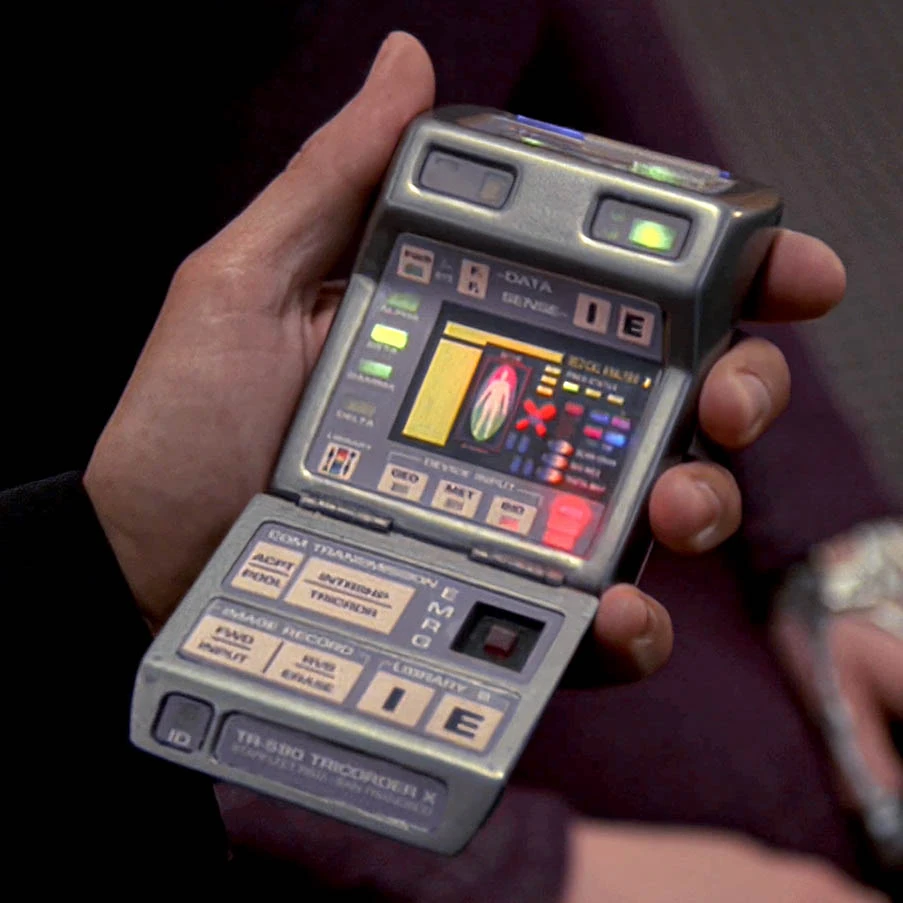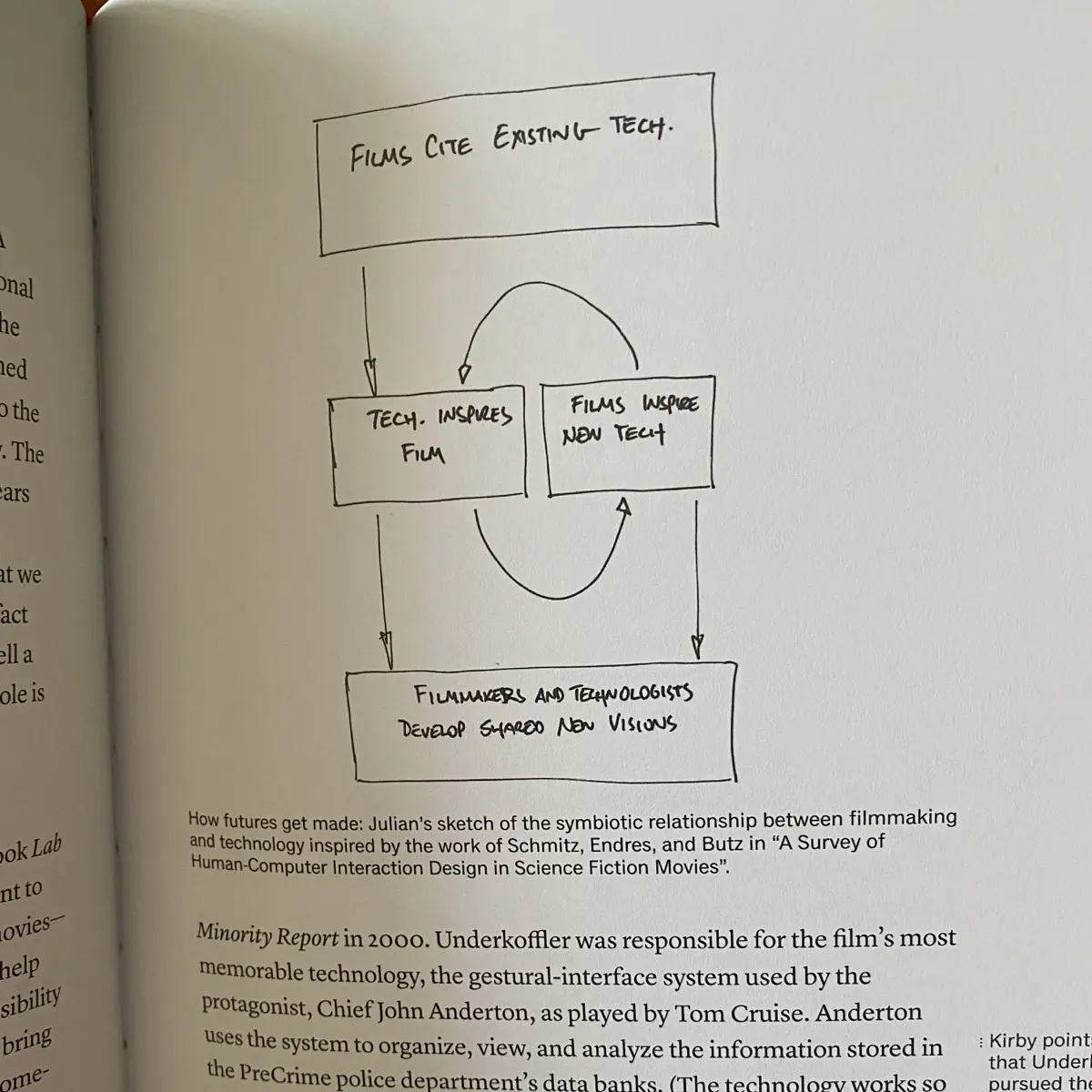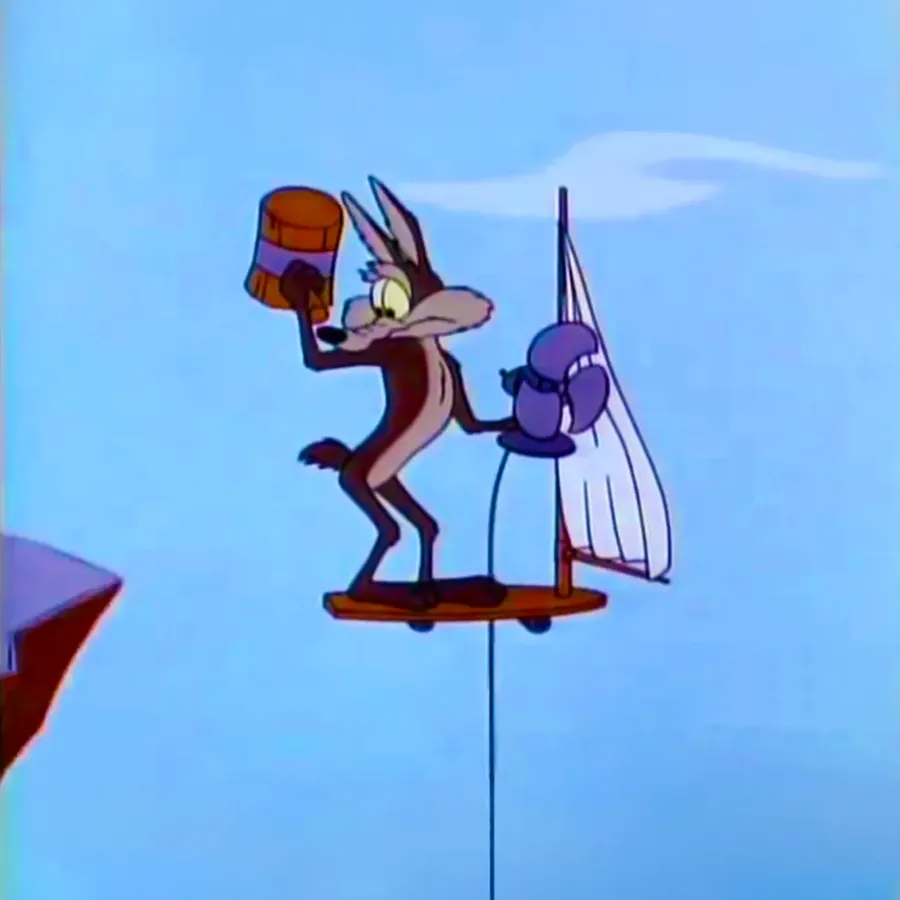
The Past’s Futures Haunt Us




Just as science seeks elegant solutions, artists should seek truth, valuing all information as a basis for knowledge and embracing a blend of scientific and poetic perspectives.
metamodernism.org
But first:
When I was in grad school at the University of Washington trying to figure out the thru line for a master’s thesis I ended up buying a television set. The kind with a tube.
My rational mind said that I needed this thing because two of my ‘research subjects’ were Star Trek: The Next Generation and The X-Files.
My poetic mind said that I wanted this thing because somethings about these two ‘research subjects’ I found enthralling, cool, and produced in my thinking inexplicably compelling questions. Questions like, “What do you mean, ‘The truth is out there?’” Or, “what can we learn about the fiction of this Holodeck thing that can be integrated into the work we were doing at the HITLab?”
I knew the television was an extravagence on my grad student budget, but I had two jobs and those were the days where you could have two crappy jobs, a $500 a month apartment, live in a bustling city, and still survive. So I got the television and watched the shows, rented VHS tapes, and pondered how I might consider these shows as legitimate research subjects.
This was at a moment when ‘cultural studies’ was something one could do without too much trouble, and it was exciting. One could take a topic like a science-fiction television show and try and make sense of it in an analytic, academic context. It helped one bring a level of enthusiasm and engagement to the work. It offered a chance to connect something I felt was ‘cool’ with some analytic rigor that might help me (and the, you know — six people who read the work) understand what that cool factor was.
One masters thesis, a doctoral dissertation, and few jobs and two start-ups later, the interconnects between ‘cool vibes’ and ‘cool things’ continues to be enthralling to consider as an engineer-y type guy who enjoys the friction of making things that the Imagination begs to be considered.
My question out of all of these experiences comes down to this: How do we integrate Imagination / Fiction with Structure / Fact? Can we integrate the evolutionary advantages of Imagination with the kinds of structures that can make ‘things’?
We create whole worlds and call them ‘entertainment’ or ‘art’ that leak into the structures that can materialize those worlds, yet it winds up being a side-note, or the ridiculous utterance by some plutocrat who really wants to have the AI from a Spike Jonze Hollywood movie wake him in the morning.
Why is this in most all cases parenthetical rather than deliberate and direct and integrated into material-making processes? What kind of organization could do this in a sustainable way?
So, anyway.
Last summer I took a course from the Brooklyn Institute for Social Research titled From Capitalist Realism to Acid Communism: an Introduction to Mark Fisher. That material has been marinating since then. A few reflections came to mind to share in the context of the state of AI, Hardware, and Product Design for plausible/possible futures.
Mark Fisher coined this neologism — ‘hauntology.’ From what I gathered he did so in order to have some language to describe a phenomenon he noticed of being haunted by the past through the material cultural artifacts that surround us today: media, art, consumer products, software, ‘content’, entertainment.
Etcetera.

My observation: This phenomenon of hauntology is particularly evident in (at least) Silicon Valley’s empasse — it’s struggle to innovate beyond nostalgic echoes of what was once considered futuristic. Not just in form, but also more directly in the intent and purpose. That is, the ‘value proposition’: plainly, what this stuff is supposed to do.
My thesis, such as it is: The imagination in operation here is at best an unstated interaction between that of a creative team building worlds through story and evocative objects (props) and a mostly rational engineering endeavor called ‘a company’ (or start-up, &c.)
My understated goal: Continue to explicate this interaction so that someone somewhere realizes that bringing imaginaton and the structures into rich meaningful collaboration is of immense value, and maybe that ‘imagination’ need not only be production & prop design for space epics and science-fiction disaster films — although both of the latter are cool, too, just not for obtaining more habitable worlds in the near future which should be the priority.
My main goal: Being mindful of whose dream of what kind of future we are living in is the first step towards recognizing that we can create other futures of other dreams. These guys creating the Rabbit R1 and the Humane AI gewgaw are creating but one future from one interconnected set of dreams of what could be. Most of the time one can float through life not even realizing that the future vision bubbling in your brain is malleable to an extreme. It just happens to be the dream external to you that was there in the worlds, the stories, the television shows and movies that was there when you were born.
The Nostalgia That Haunts Us
-
Take a look at the Humane AI Pin and the Rabbit R1 and they way they embody a circulation between Imagination/Fiction and Structure/Fact as well as this empasse: they both can be seen to be reliving the anticipations of a future from the perspective of yesterday and its bygone eras rather than imagining farm fresh futures from today.
-
Our futures, in this instance, are a past’s future, via Star Trek:The Next Generation — a television show of some note depending on who you are and what is meaningful to you. Certainly a wonderful case study for the interoperability and interaction between imagination and the kinds of structures that materialize dreams and visions of possibility. (cf: How William Shatner Changed the World for a light-hearted and playful instance of this oscillation between fiction and fact, or Samsung’s effort to defend itself against an epic suit by Apple by indicating that Stanley Kubrick and Arthur C. Clarke’s ‘2001: A Space Odyssey’ had props (and renderings in movie posters) that indicate ‘prior art’ in relations to Apple’s iPad. (Ultimately this defense was disallowed.)
-
(By the way, that television I was talking about? Looking back I now wonder if I may have ‘bought’ grad school so I could watch ST:TNG and The X-Files so I could figure out why I enjoyed the shows, and make them make sense as more than ‘just’ entertainment, in the same way that my second grad school stint was so I could play SimCity, gain an excuse to talk to Will Wright, and play the game so it made sense more than ‘just’ entertainment. There’s utility beyond just idle passtime with your more thoughtful forms of what is often dismissed as entertainment. To a degree, this is where the value of things like Design Fiction lies: the advertisement for the Kohler AI-powered commode is not mere satire, nor mere enertainment. It has an excess, that I think is the value that is not yet recognized in its fullness, and that does not circulate in the way other kinds of value created by Imagination does. It isn’t ‘art’ in either the pedestrian sense, nor the traditional aesthetic sense of the word. It’s something else, like a new resource of value for which there are not yet circuits for its flow and exchange.)
-
I might be off a bit as regards the Rabbit R1, but I’m less interested in any kind of 1-to-1 correlation: it’s more the continuity of things. If you squint, you see a similarity, like if your retina got detached for some reason and the world went fuzzy, you might reach a conclusion in this regard. (p.s. my retina isn’t detached, but my friend’s is and he could see the similarity if he covered his good eyeball.)
-
What I’m mostly curious to inconclusively describe is the relationship between visions of the future, and then the futures that become materialized by the materializers of consumer culture, which are basically companies that make stuff..stuff like the Rabbit R1 and the Humane AI Pin.
-
Like..here’s how it works: You have a vision of a future conjured largely by people in the film/television show’s ‘Art Department’ — where Imagination is more important than an ability to operate Figma or be program managed by some program manager — and then, well..someone maybe quite a bit like me has this seared into their consciousness cause they dig the expression of Imagination that is the show itself, and then, well..some plutocrat who can’t spend money fast enough decides they want that thing they grew up with and then things get materialized that maybe should’ve stuck around as a prop rather than a business idea.
-
The Humane AI Pin and Rabbit R1 — well, these products are imbued with a kind of future-nostalgia. They are a tomorrow from yesterday. They are the past’s future. They are a kind of paradoxical set of objects using the buzz of technological structures and stacks of this very second – only in order to recreate or emulate technologies and aesthetics from the past.
-
The Humane AI Pin indexes heavily towards the Star Trek TNG Communicator badge — that’s no revelation at this point. The Rabbit R1, soaked through with Teenage Engineering’s aesthetic, itself a bit of Rams-ian austerity, 8-bit vibes, the 1:1 square that was the early television set including a dial for tuning in over-the-air-waves signals. Reminds me of the TNG Tricorder.
-
That may not be a problem, until you get sort of mystified at the inability to create a legible index to a new future. Like..where’s the creativity of the unexpected and unanticipated — which themselves can be beautiful characteristics of product design.
-
Let me be clear: I’m not shit-posting on either of these. I’ve done hardware product design and manufacturing (and brand development, audience building, etc) and that shit is hard, and very easy to fail at. Seeing it done and actually ‘get done’ and not left after the good idea has been had — well, that gives me goosebumps. It’s a reminder that we can in fact make new worlds. It’s just that these particular artifacts are from another moment’s dream of the future and the constraints of the value circulation networks within which they operate made it all the more easier to fail. (Get it to market, be first, get lost in the execution rather than the dream, etcetera.)
-
But what I suppose I wonder is best captured as a question, Jepordy style: Where’s the future of today?
-
Now, there’s nothing explicitly wrong about this, and I’m not here to poo-poo in that sneering way that design and aesthetic criticism likes to do. Nor is this an attempt at gaining followers the way influencers do while giving an angry negative review on Youtube, sneering in the cover image of the video looking like someone is taking their body temperature that other, less preferred way.
-
I think both of these objects 👆🏽 are ‘cool’ in the way the Revell plastic models of the Star Trek away-team gewgaws I had when I was 13 were ‘cool’ back then. They were inexplicably compelling things that made me feel like I was connected to my favorite show to the degree that, you know..you might want to bring them to school in your backpack. You felt like they could do everything the imagined artifacts could do despite the fact that they actually did nothing more than make me feel something that can only be described as, ‘whoa..cool..I got a communicator in my backpack, eh?’.
-
The Humane AI Pin and the Rabbit R1 may be worse than the Revell plastic models of my youth insofar as they are supposed to actually do something but seem to fail at their instrumental goals. (See any/most/all reviews on Youtube with the sneering feller on the video cover image.)
-
I’ll give the companies that made these things this: They are certainly earnest in their ambitions.
-
Wry, playful, somewhat ironic explorations signalling a sea of future products and the cultures, curious rituals, behaviors, ambitions that they imply.
-
They both also almost certainly cost a shitton of money to get to market — way more than the Revell tricorder, or The Wand Company’s Tricorder so they have a sincerity to their pragmatic idealist desires.
-
Both the Rabbit R1 and the Humane AI pin strive to be magical but fail spectacularly in instrumental as well as, you know — business ways. So the belief spell failed to keep the dream levitating. Is it unfair to say that either of these is the Juicero of AI hardware? Maybe.

-
This all feels like the recurring bit when Wile E. Coyote, the naive but earnest menace to the amused Road Runner, jets out over the canyon’s chasm with some destined-to-fail contrivance, only to fall once he is reminded of the existence of gravity.
-
Anyway..back to Fisher and the hauntological that I see imbued in these two attempts at being near futuristic, leveraging the current fascination and bewildering anxiety of this AI moment.
-
Fisher was part of an interdisciplinary group called the “Cybernetic Cultural Research Unit” at the University of Warwick in the early 2000s. He was also known for the ways his work engaged with musicians, artists, engineers, theorists, and the general public. In some sense he was a ‘public intellectual — one of those academics whose work vibed enough with the moment to become a ground plane for cultural producers to help them make sense of their own work.
-
He had this notion — capitalist realism — that highlighted the pervasive belief that capitalism is the only viable political and economic system, making it difficult to imagine alternatives. His thesis was roughly this:
We live in a bubble in which our imagination has difficulty fashioning alternatives, not just to ‘capitalism’ but to most anything that is other than what we have been born into.
Cultural producers at the vanguard, right at the edges of this bubble attempt to sense alternatives, but it’s hard. Often they get pulled back into the past’s sense of ‘what’s next’ or ‘what just is and for which there is no alternative’.
Imagining anything else is difficult because that is a deviation and divergence from what makes sense and what is normal to imagine.
(Hence?) states of nostalgia are preferred as they are familiar, conservative, and comfortable to settle into.
-
Fisher had a disdain for nostalgia, this much was evident in his analyses, which often examined the political, philosophical, and cultural implications of our collective imagination. Relevant to my own interests as a sometimes product/tech/object/software designer, the phenomenon of technological nostalgia in the worlds I sometimes intermingle within, I’ve noticed that Silicon Valley stands as an example of what Fisher critiques — an exemplar of some sort of cultural stagnation and the challenge of envisioning and imagining farm fresh futures, rather than futures that belong to some past; futures that were and, for some reason, continue to exist despite epistemic shifts in culture.
-
(( Of course a reasonably good reason would be that the addressable market comprehends futures from the past. It makes good sense — it is reasonable — to create products/services/apps/gewgaws that are the promises we can make sense of rather than something completely incomprehensible. A toilet that reflects on the quality/quantity of that produced by one’s bowels taps into all manner of pre-existing notions that are already understood. ))
-
In the 1980s, cultural theorist Fredric Jameson critiqued postmodernism, observing that there would be a moment characterized by revivalism and pastiche. Today, I would say this observation is more accurate than ever, particularly evident in the resurgence of 80s aesthetics and themes in contemporary media. This points to a broader societal incapability to create something that seems futuristic or otherworldly. Instead, ironically, in our attempt to cling to now-missing hopes for the future, we return to the past’s future, trying to understand how the future was imagined “back then.”
-
An exception to this might be Solarpunk — but I’m not certain enough to stand by this entirely. (cf The fact that the aesthetic seems (in the more prevelant examples of Solarpunk) pretty much Studio Ghibli’s aesthetic indicating that it draws from a past and is itself hauntalogical. Possibly.
-
Design Fiction and Science Fiction, while often conflated (please don’t), address this cultural stagnation — this inability to imagine other than sometime else’s future.
-
Science Fiction typically envisions futures as a linear progression from the present, extrapolating from current trends to imagine advanced technologies and societies. Design Fiction, on the other hand, creates tangible artifacts from speculative futures, prompting us to reflect on the present by materializing alternative possibilities. Both genres can play a critical role in breaking the cycle of cultural stagnation by pushing the boundaries of what we consider possible, but Design Fiction does so through the lens of pragmatic-practical, and does so with a kind of sincere irony in its character.
-
Finally..Here’s the point: the nostalgia paradox in Silicon Valley highlights a fundamental tension between innovation and familiarity. On one hand, companies are driven to develop new technologies to stay competitive. On the other hand, they often rely on retro aesthetics and familiar design elements to make these technologies more palatable and legible, embracing the irony that the future and the past are all contained within this one object.
-
Design Fiction can help navigate this paradox by encouraging designers and technologists to think more expansively and employing various attributes of the metamodern rather than the postmodern. By envisioning and prototyping speculative futures, Design Fiction can reveal the limitations of nostalgia-driven innovation and inspire more original and forward-thinking design solutions.
-
While it’s not that all media embracing these nostalgic aesthetics is problematic. Somewhere Fisher notes their undeniable appeal. But, the pertinent question becomes why we find them so appealing now. Fisher’s analysis suggests that this is not a random trend but a symptom of a deeper cultural issue. We seem more fascinated by perfecting past aesthetics rather than creating new ones, a stance that might be seen in the resurgence of pixel art and chiptune music in indie games. This obsession with the past can limit our ability to imagine and create new forms, trapping us in a cycle of repetition.
-
Design Fiction offers a way to address this allure by encouraging us to think more critically about the future. By creating speculative artifacts, Design Fiction helps to break the cycle of nostalgia and push the boundaries of what is considered possible. It challenges us to move beyond perfecting past aesthetics and instead focus on creating new and innovative designs. This can help to foster a more forward-thinking and imaginative approach to design, encouraging us to envision and create genuinely new futures rather than simply rehashing the past.
Why The Familiar?
-
In light of Fisher’s analysis, it becomes crucial to contemplate why our culture finds solace in familiarity and repetition. Why is the allure of pre-established cultural forms so strong that it overshadows the drive to create anew? As the future seems continuously deferred, our cultural and technological artifacts become residues of what could have been rather than harbingers of what might be. This reliance on past forms limits our ability to imagine and create new futures, trapping us in a cycle of repetition and stagnation.
-
Getting a hold of this phenomenon is useful, not so much to critique, but to understand possible paths towards innovative design, and to see what happens if we break free from the cyclical trap of nostalgia and move towards a future characterized by genuine innovation and creativity. Which brings me to Design Fiction: the focus on creating speculative artifacts offers a pathway out of this weird cycle of nostalgia. By encouraging us to think more critically and imaginatively about the future, Design Fiction can help to foster a cultural environment that is more open to innovation and more willing to embrace new and transformative ideas. We do this so as to break the cycle of cultural stagnation and create a more vibrant and imaginative future for us all to inhabit.